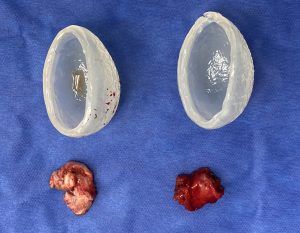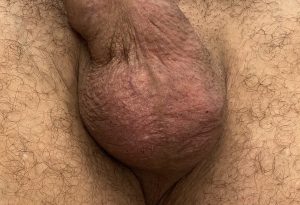Background: Testicular enhancement is different than testicular replacement surgery. One is aesthetic and the other is reconstructive. One uses the opposite normal intact testicle as the exact size of the replacement while the other uses the size of both natural testicles to determine how to make an implant to enhance its size.
One of two different methods of testicular enhancement is to attach an implant to the testicle to create a larger size. (an auto-alloplastic approach) This can be done by a partial (cup) or a completely enveloping implant. (wrap around) Each type of attached implant has its advantages and disadvantages. They both share the disadvantage of potential postoperative separation from the testicle. The cup implant also has the unique disadvantage of edging where it stops coverage of the testicle. This is almost always palpable and sometimes even visible. The cup implant is often fairly thin and with partial coverage of the testicle only offers a modest increase in testicle size.
When replacement of cup testicle implants is desired the question becomes should it be done by a complete wrap around implant or use a completely different side by side method. The displacement or side by side method means that a larger implant than the natural testicle is used that, if a large enough difference exists, pushes the smaller testicle aside. (up and back) The implants then becomes the dominant structures in the scrotum.
Case Study: This male had existing cup testicle implants that had edging he disliked as well as he desired a much larger size.
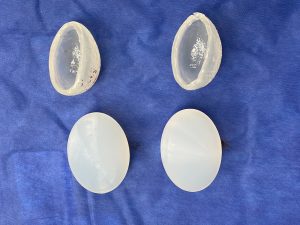

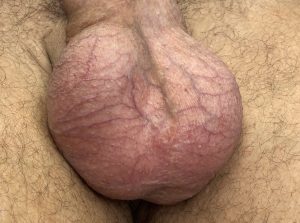
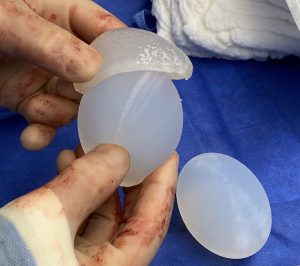
Case Highlights:
1) A cup style testicular enlargement implant can be associated with palpable edging and visibility, separation from the testicle as well as limited testicle enlargement.
2) When replacing cup testicle implants a solid implant placed in a side by side technique can be effective if the natural testicles are small enough and the new implants are large enough.
3) Long term followup shows a successful large testicular enhancement implant effect.
Dr. Barry Eppley
World-Renowned Plastic Surgeon




